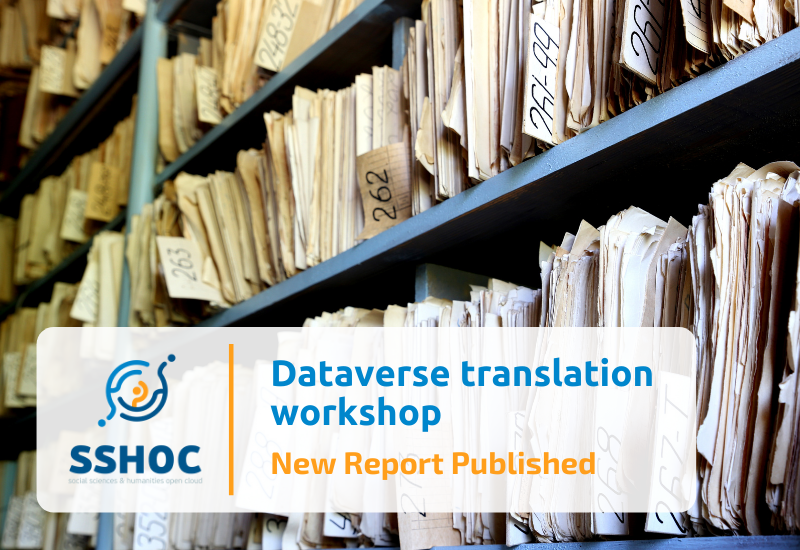
- Social Sciences & Humanities Open Cloud
SSHOC Workshop Notes: SSHOC Dataverse Translation Workshop

Date:
26 July 2021
The four ERICs of SSHOC task 5.2 have been continuing their work on a SSH tailored repository infrastructure, based on Dataverse. Service providers all over Europe have already been able to implement their developments on previewers, data migration solutions, connections to local PID providers, adjustments for domain-specific metadata requirements, and interoperability with controlled vocabularies. The newest addition to this portfolio was presented on 25 May 2021, when the team of Marion Wittenberg (DANS), Laura Huis in ‘t Veld (DANS) and Veronika Heider (AUSSDA) introduced Weblate, a tool for translation of the user interface of Dataverse into European languages.
Key functionalities of Weblate
Service providers who would like to offer the user interface of their Dataverse instance in the national language(s) will now be able to support the translation process with the practical and easy-to-use functionalities of Weblate. The tool has a friendly interface, the ability to keep track of one’s progress (users can see what parts need editing and reviewing), and the ability to automatically detect the untranslated strings after an upgrade of the software.
One of the most important advantages of Weblate is the ability to collaborate with other translators. Collaboration is possible both on a level of single language and between languages. On language level, users can save, review and approve suggestions, appoint reviewers, add comments to terms, and start a discussion. Terms can be added to Glossary that serves as a style guide for consistent translations of common terms.
To cooperate between languages, users can link screenshots to English source strings for context information, add explanation texts to the source strings, compare translations in other languages, and use existing translations from previous versions of the software.
AUSSDA’s experience
Compared to the challenges and workload of the previous user interface translations in a project by AUSSDA, the experience confirms that Weblate is easy to use and manage. Existing translations were imported to the tool with no issues. The ability to cooperate with others and the added context that Weblate provides are particularly valuable.
Weblate in use
Participants that were able to access the application prior to the workshop also learned of the key procedures. The team is planning to reconvene with the Weblate users in the autumn of 2021 to discuss the user experience and support the community of the service providers.
Access
CESSDA Weblate application can be reached here. A user guide is freely available. For any questions or comments, you can contact the T5.2 team at training@cessda.eu.
Resources and more information
Transcript of the Questions and answers session
